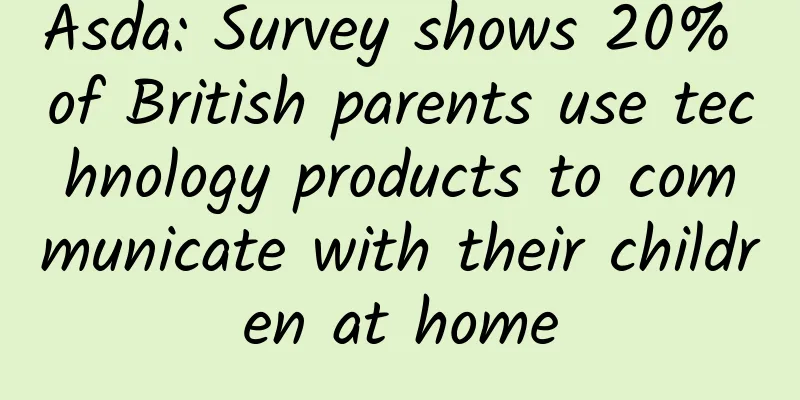Asda: Survey shows 20% of British parents use technology products to communicate with their children at home

|
According to foreign media reports, the theme of "how technology can promote more communication" has a new argument: a recent survey in the UK found that one in five parents use technology products to talk to their children (parents and children live in the same home). A recent national survey conducted by Asda found that parents are increasingly using technology to communicate with their children within the family, such as calling them to eat or telling them to do housework. The most common technology use by parents was texting, at 55 percent, followed by Facebook at 20 percent and cell phone calls at 13 percent. For parents, the most common message sent was "Dinner is ready," at 13 percent of all messages. Parents also frequently sent messages like "Clean your room" and "Do your homework." Nathan Mills, technology expert at Asda, said: “The reality is that technology is allowing us to be in touch with more people more often than ever before – both outside and at home. For example, parents have always found it difficult to communicate with their teenagers, but now low-cost technology is giving parents a hotline to their children’s rooms.” It's easy to send a text message to the kids to get them to the dinner table or to get them to finish their homework. Most homes don't have walkie-talkies, and now mobile phones can function like them. Group messaging apps are useful when a family member needs to send a text message to everyone in the family. This shows that mobile phones can shorten the distance between people in a variety of situations, even between family members living under the same roof. One industry insider commented: I was initially concerned that parents were using phones as a way to avoid real, face-to-face interaction with their kids. It’s more convenient to nag them about homework than to nag them face-to-face. We already have a lot of communication technology to avoid direct conversation, which sometimes leads to misunderstandings because it’s often difficult to understand what people mean when you hear what they say but don’t see their facial expressions and body language. But then I heard from some parents that it helps them communicate with their teenagers, who aren’t always excited to talk to their parents about things. Many parents do their best to communicate with their children, and using the tools that their children like best is a helpful practice. For those who don’t have children and teenagers at home, this may seem strange at first, but it is becoming the way many families communicate. |
<<: How to spend the 100 days after a bone injury surgery
>>: What to do if your child accidentally takes medicine
Recommend
What is sarcopenia in the elderly? What foods are good for the elderly with sarcopenia?
We often see some elderly grandparents who are ve...
Why do women have itchy breasts?
Women's physiological characteristics are dif...
How to prevent gestational sac bleeding
The gestational sac appears in the early stages o...
How long does it take to get a medical abortion?
If you don't take protective measures when ha...
What causes abdominal distension and pain in late pregnancy?
In the late pregnancy, as the fetus is about to c...
An elderly man had hip pain and limping, and it turned out to be "femoral head necrosis"! 6 tips to help you check yourself
Is it true that "if you are patient for a wh...
What causes abdominal distension and pain during menstruation?
For many women, the menstrual period is the most ...
Menstrual rash on face
What is the reason for small red bumps on the bod...
Roast or roast? What is the difference in the taste of coffee roasted?
Baking, also known as roasting or baking, refers ...
Simple yoga moves for pregnant women on bed
A pregnant woman's belly will begin to bulge ...
What is the cause of the cold stomach?
Women need care, because the female body is much ...
How to store crabs bought today for tomorrow's consumption? Can crabs bought today be stored until tomorrow?
We all know that crab is a popular delicacy. Ther...
Treatment for left breast pain
Nowadays, there are more and more strange disease...
The dangers of birth control rings
The contraceptive ring can be used for contracept...









